(A historical view of the new coronavirus pandemic)
The year 2020 will go down in history for most people as the year of broken dreams. Unless you happened to be extraordinarily fortunate, personal and collective plans made for 2020 were shattered. Even worse, there was really no way to expect or prepare for what we all encountered.
Certainly, we have experienced difficult times in the past. Here is a short walk through the 21st century—The September 11th terrorist attack in the United States. The Bali, Indonesia restaurant bombing. The 9.2 Indian Ocean earthquake and tsunami. The earthquake and tsunami in Japan that triggered the meltdown of the Fukushima Nuclear Power Plant. The worst Ebola epidemic in recorded history. The global debt crisis and Great Recession. Australia endured the most widespread brush fires in its history.
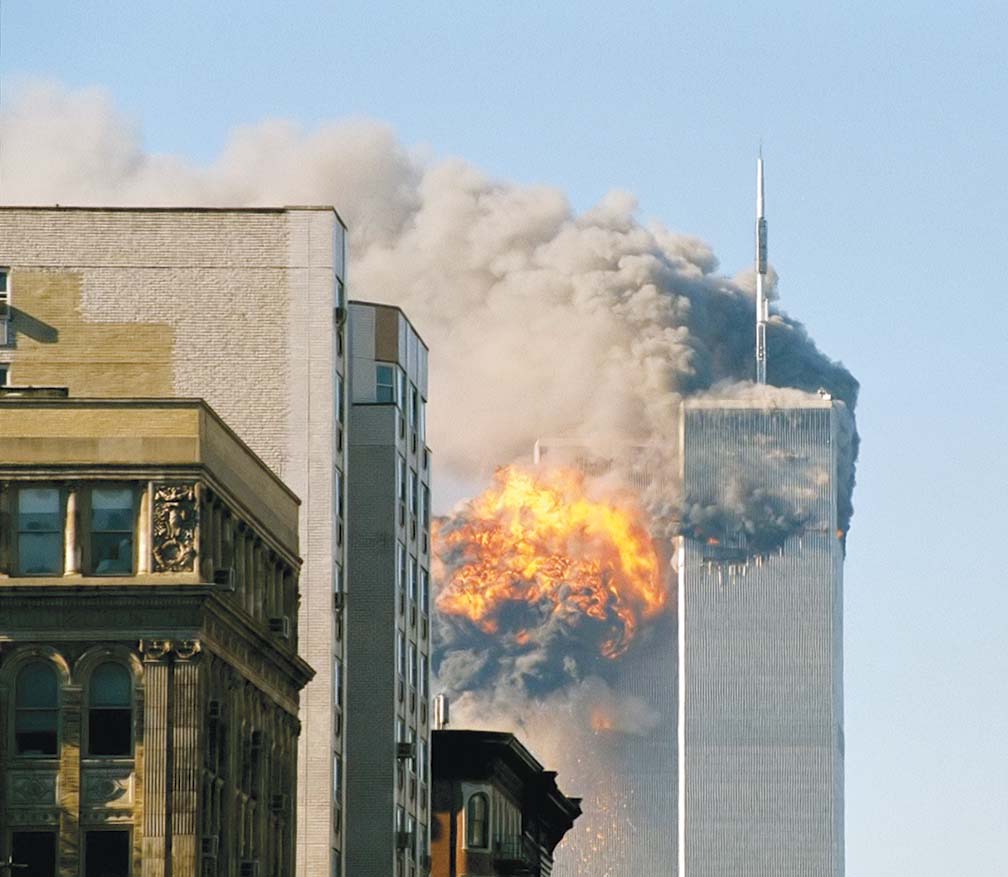
And briefly for the Philippines: the flooding from Ondoy (Typhoon Ketsana), the Bohol earthquake, and Super Typhoon Yolanda (Typhoon Haiyan).
The pandemic of 2020 must be put in a historical perspective. While each of the aforementioned events were of global significance, the direct impact on individuals was limited to a particular area. When those incidents happened, the world went about its daily routine as if nothing important had occurred. It is not that we all do not care about the calamities that befall our neighbors close or distant. But it is almost as if that we all know “There but for the grace of God go I” and next time it very well might be our turn to have the difficulty. So, life must go on with hardly a bump in the road.
There is a reason it is called “World” War Two. Every country on earth—whether a sovereign nation or a colony—was involved actively or passively. Some were members of the group of 40 nations that suffered direct combat deaths. Dozens of countries experienced actual warfare on their territory. Nations way outside the major and minor theaters of operation participated one way or another.
Argentina remained neutral until a month before the war in Europe ended as many Argentines saw the war as a potential source of economic benefit by exporting to both sides. Still more than 750 Argentine volunteers fought in the British, South African, and Canadian Air Forces. Nearly 4,000 Argentine volunteers fought on the Allied side.
Abyssinia (Ethiopia) was an Italian colony. In 1941, British troops drove out the Italians and restored Abyssinian independence. The country suffered 5,000 military deaths and 200,000 civilian deaths during the war. Brazilian naval forces helped the American and British Navies to patrol the South and Central Atlantic Ocean. Mexico dispatched an expeditionary force to participate in the war on the front lines in Europe and the Pacific. Closer to our home, one Mexican air squadron flew air support for American ground forces during the 1944 to 1945 campaign for the Philippines and attacked Japanese naval targets in the South China Sea and in harbors in Taiwan.
Yet for the vast majority of the global population, the daily routine of life continued and was generally normal. In the western hemisphere, people went out to dinner and watched a movie. Children went to school and farmers plowed their fields and harvested their crops. While Southeast Asia was under Japanese occupation, the war for most of Sub-Saharan Africa was something to read about in the newspaper and breaking news was from the radio not from the sounds of battle in the distance.
THE BLACK DEATH WAS A GLOBAL EPIDEMIC of bubonic plague that struck Europe and Asia in the mid-1300s. Estimates are that as much as 20% of the world’s population died. To put that in 2020 perspective, that would be some 1.4 billion deaths or the total population of China or India. The combined population of all the ASEAN countries is only 650 million. It would be as if all the inhabitants of the countries and territories in Europe including Cyprus, Kazakhstan, Turkey, and the countries of the Caucasus were wiped out in a few years.
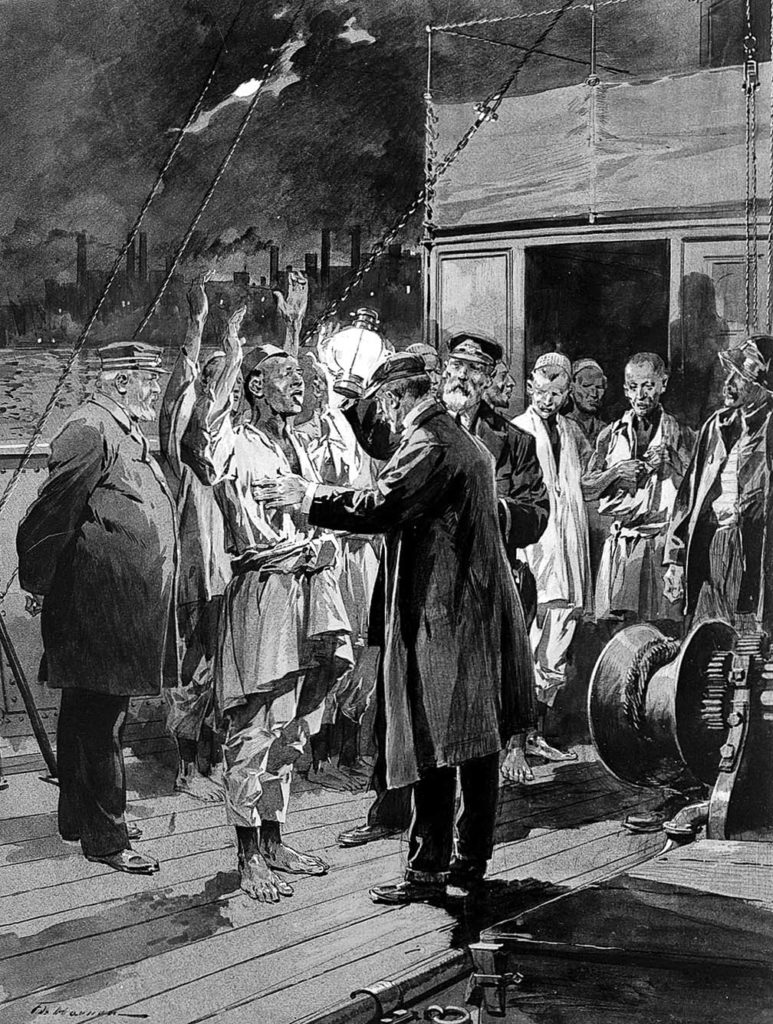
These numbers are impossible to imagine. Yet again, there is no indication that the plague reached the Western Hemisphere and East Asia was spared.
Epidemics both local and widespread have been with us since the beginning. About 5,000 years ago, a village in China was wiped by an epidemic disease. Bodies were stuffed inside a house that was burned to the ground. The archaeological site is called “Hamin Mangha.” As much as 50% of the population of Athens died in 430 B.C. from a still unknown disease. It is estimated that up to 30% of the population of Marseille, France perished from another outbreak of the plague in 1720-1723.
We all know of the death toll for the early 20th century “Spanish Flu.” But did you know that in 1957 and 1958, the number of global deaths from the Asian Flu was 1.1 million? The current ‘official’ number of global deaths from Covid-19 is now 1.5 million. However, as a percentage of global population, the Asian flu deaths in 1958 would today be the equivalent of 2.5 million people.
Here is an analysis of the contemporary record and descriptions from the period around 1350 in Europe. “The plague arrived in Europe in October 1347, when 12 ships from the Black Sea docked at the Sicilian port of Messina. People gathered on the docks were met with a horrifying surprise: Most sailors aboard the ships were dead, and those still alive were gravely ill and covered in black boils that oozed blood and pus. Sicilian authorities hastily ordered the fleet of “death ships” out of the harbor, but it was too late.”
As a side note, a report from the medical faculty in Paris to Philip VI of France blamed the ‘heavens,’ in the form of a conjunction of three planets in 1345 that caused a “great pestilence in the air.” Certain Muslim religious scholars taught that the pandemic was a “martyrdom and mercy” from God, assuring the believer’s place in paradise. For non-believers, it was a punishment.
In 2020 we still have what people might call superstitions about disease. Reuters: “Cambodian villager Ek Chan has avoided the novel coronavirus so far without masks or social distancing but rather the scarecrows she has made to keep the deadly virus at bay.”
But what about the idea of wearing masks to prevent the transmission of COVID-19? This is what the World Health Organization had to say in its latest update on Oct. 20. “Masks should be used as part of a comprehensive strategy of measures to suppress transmission and save lives; the use of a mask alone is not sufficient to provide an adequate level of protection against COVID-19.”
The conclusion is simple. There is not a ‘mask magic bullet’ for protection. A survey taken a couple of months ago showed that the countries with the highest compliance with ‘always wearing a mask outside the house’ were the Philippines and Mexico. The population of Mexico is about 20 million more than the Philippines so naturally we would expect a greater number of COVID-19 per capita deaths, cases, and currently active cases.
However, there is a huge difference. Deaths per million population: Mexico/814, the Philippines/76. Cases per one million population: Mexico/8,500, the Philippines/3,883. That is despite the Philippines having tested 31,000 people per million versus Mexico testing 22,000. Active cases not resolved by either recovery or death in Mexico is approximately 180,000 and about 35,000 in the Philippines.
Most events on a global scale fall at the two ends of the scale. Either they are completely unpredictable like the Black Plague or with an obvious headlong move as the progression to World War Two.
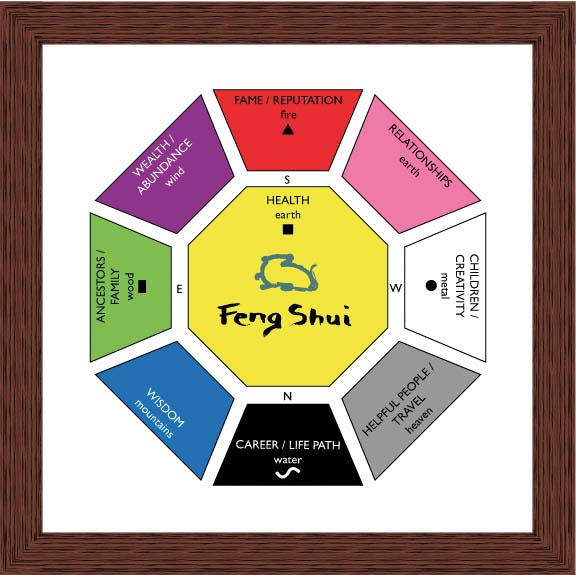
SINCE TIME IMMEMORIAL WE HAVE TRIED to divine the future. Asians of course look at Chinese astrology and feng shui for possible clues to the future. One group—thechinesezodiac.org— had this to say as 2020 began about the year of the Metal Rat.
“The Rat is the first sign from Chinese Astrology, and for this reason, 2020 is considered a year of new beginnings and renewals. New opportunities to find true love, and to earn more money will occur. The year 2020 will be successful for those who will take advantage of all the chances appearing throughout the year.”
But reading on: “The year 2020 is quite challenging, especially health-wise, but also financially, with obstacles, impediments, and unpredictable situations, which will mainly occur during the first half of the year.” They were impressively correct on that.
It gets even better. “The vital force is weak, which is why this year you might feel pretty stressed, even by small things. You will notice slow progress in your projects, which is why you need to be confident in your strength, and you will be successful in bringing everything to a favorable end.”
Listen to this: “During the first half of the year, you will have more free time, and you will be able to rest and make plans for the future. You will consolidate the relationship with your life partner, and you will spend more time with the kids.” The feng shui masters perfectly described what we have been going through since March. And finally, these words of advice: “Nothing should be left to chance in 2020, and money, earnings, businesses, and careers need to be protected.”
The universe has a habit of stepping on the best laid plans of mice and men.
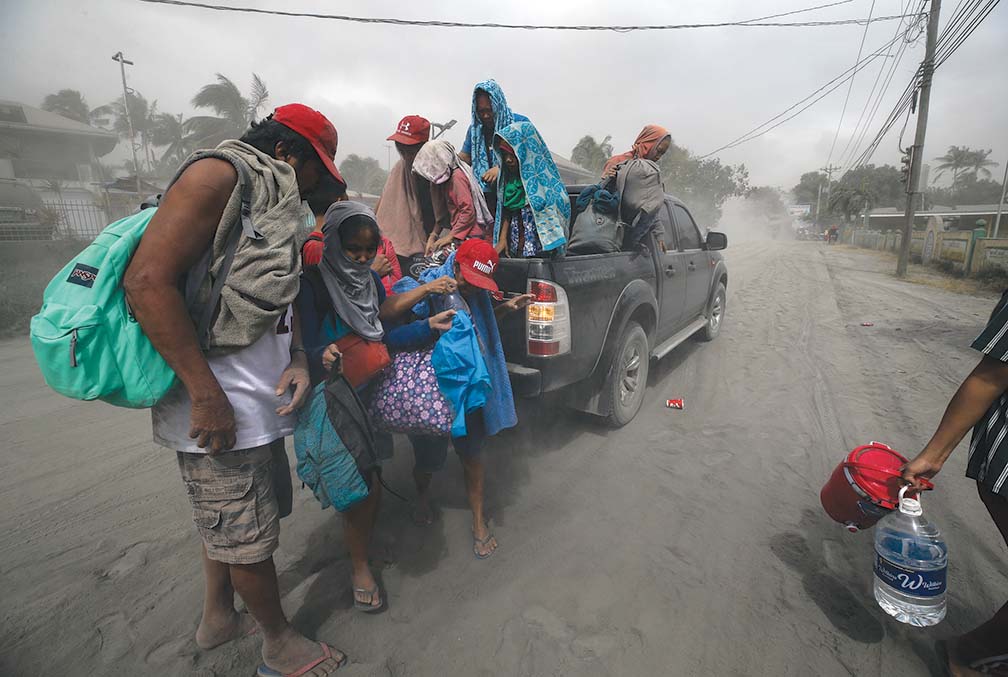
Still it was almost as if Divine Intervention stepped in to warn us that this would be the Year of Calamity. On a quiet Sunday afternoon on Jan. 12, Taal volcano erupted for the first time since 1977. By Jan. 26, the Philippine Institute of Volcanology and Seismology (PHIVOLCS) observed decreasing volcanic activity in Taal and the agency downgraded its warning to Alert Level 3. On February 14, it was finally determined to downgrade the volcano’s warning to Alert Level 2.
However, by then we had gotten a strong taste and foreshadowing for what was yet to come. Many of us learned what wearing a face mask would feel like. There was a suspension of school classes, work schedules, and flights in the area.
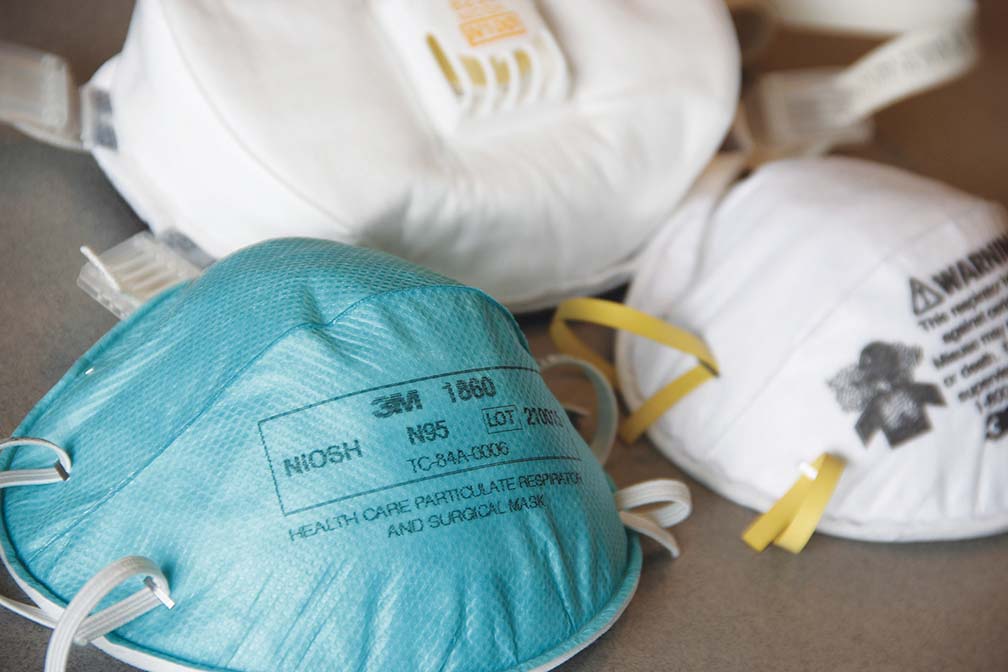
In the aftermath of the volcano erupting we learned a new term: N95 mask. We also received an education about one of the most important and valid economic rules, the law of supply and demand. The price of an N95 mask inflated, with some stores inflating its prices to Php200 a piece from the standard Php25 to Php40.
The Taal eruption can be explained as an Act of God. The pandemic is a bit more complicated. While it may have taken some 600 years to figure out, we know more about the origins of the Black Death than we do about COVID-19.
WE HAVE BEEN TOLD THAT THE COVID VIRUS jumped from bats to humans. Or the virus was manufactured as a biological weapon and was accidentally released from a Chinese weapons lab. Maybe the virus was being studied in a medical facility in China and proper safety protocols were not followed. Or possibly COVID-19 came from space on a meteorite or in some alien visitor’s luggage. Take your pick of these.
There is some evidence that Patient Zero began having symptoms in early December 2019. He was in his 70s, had Alzheimer’s disease, and had not been to the Huanan Seafood Wholesale Market. That sort of blows the ‘bat soup’ hypothesis. The first public message on the pandemic came on December 31, 2019 from the Wuhan Municipal Health Commission informing the city about the early signs of a pneumonia outbreak.
However, on January 2nd, 41 admitted hospital patients in Wuhan, China, were confirmed to have contracted (laboratory-confirmed) the 2019-nCoV (novel coronavirus). Twenty-seven (66%) patients had direct exposure to Huanan Seafood Wholesale Market. Now we are back to the ‘bat soup’ theory.
Over the next two weeks, while we were concerned about the Taal eruption, it became obvious China had a big problem. The trouble began spreading to other countries like Thailand and Japan in Asia. The United States reported its first confirmed case on January 20th and by the end of the month, Europe was well on the COVID-19 ship to nowhere.
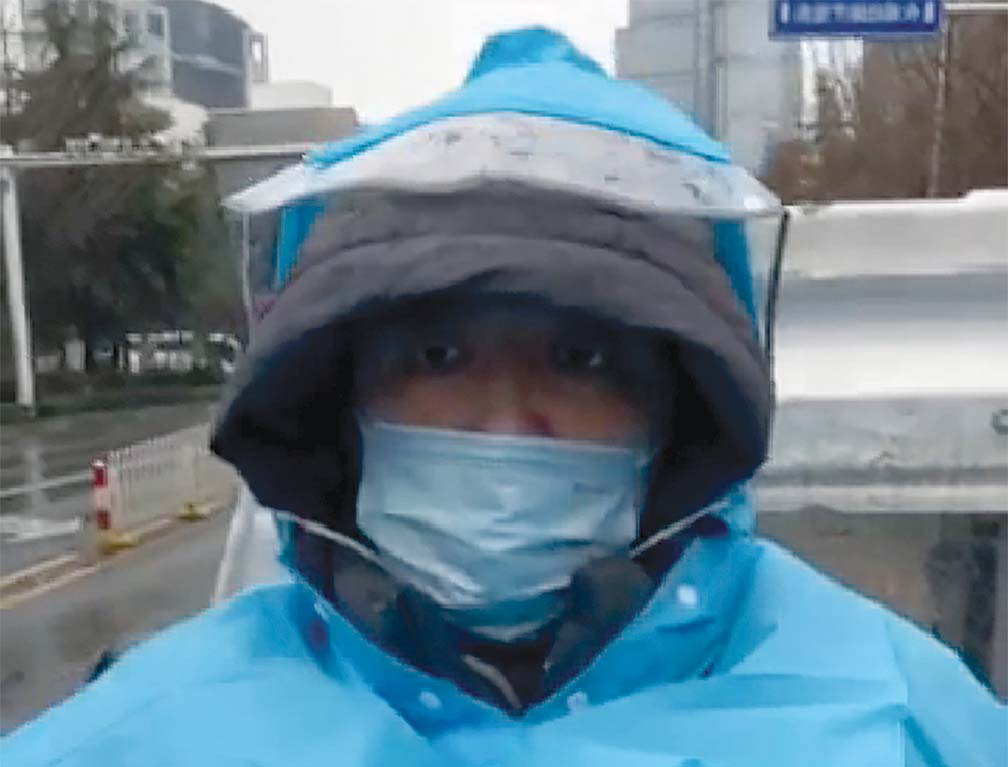
Our sister publication—BusinessMirror newspaper—said the obvious in an editorial on January 24th titled, “China’s Health Problem Is Our Problem”—“It is up to our own health officials to protect the Philippines. We must be on guard.” Our first case was a traveler from China confirmed on January 30th. The rest is history.
On February 2nd, the first death from the disease in the Philippines was confirmed. This death was also the first confirmed death outside the Chinese mainland. The third case in the country was confirmed three days after.
One month later, the fourth and fifth cases, an employee working in Bonifacio Global City in Taguig, and a resident of Cainta, Rizal respectively, were confirmed on March 6. Both were Filipino citizens, making them the first and second cases of Filipinos inside the Philippines. Then the spread took off. In rapid succession, four new cases were confirmed on March 8. Another ten were confirmed on March 9.
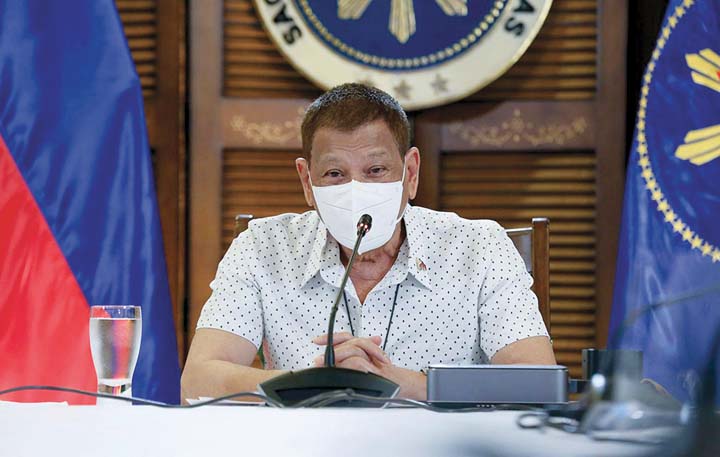
That evening, President Duterte formally declared a state of public health emergency. The President suspended all classes in public and private schools in Metro Manila from Mar. 10 to 14. Come Mar. 10, nine new cases were confirmed. By March 11, an additional 16 new cases were confirmed. The first case in Negros Oriental and another in the Visayas were confirmed. The first case of a resident of Lanao del Sur in Mindanao was confirmed as was a case in Batangas.
PRESIDENT DUTERTE ANNOUNCED a partial lockdown in Metro Manila beginning at midnight of March 15 that covered 16 cities. Land, domestic air, and domestic sea travel to and from Metro Manila was suspended until April 14.
We were all blindsided by that announcement having no idea that it was coming. Perhaps you also crossed your fingers and said a little prayer that this was only temporary. That prayer was not answered positively.
Within two weeks, 538 new cases were confirmed on Mar. 30, bringing the number of COVID-19 cases in the Philippines to over 2,000. The death toll climbed to 88 and there were 49 recovered patients. By now we knew that this was only the beginning. During a press conference on Apr. 24, Duterte announced another extension for the enhanced community quarantine until May 15. The COVID-19 case count was over 7,000.
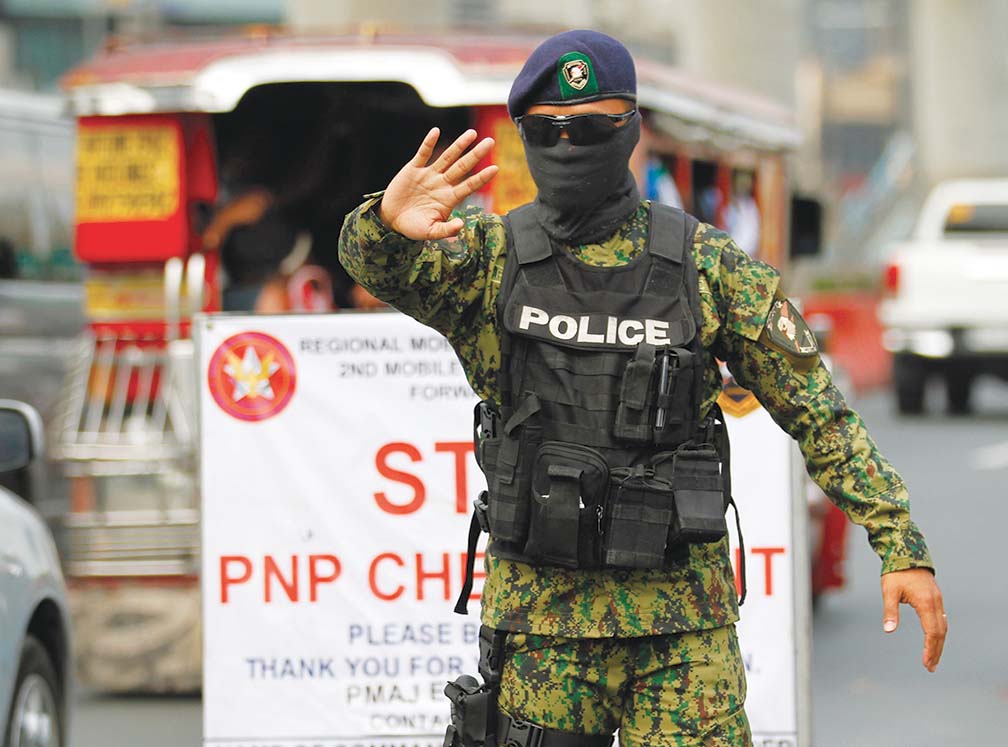
Some 295 new cases were confirmed on May 3, bringing the COVID-19 cases in the country to more than 9,000. Three days later the 10,000 mark was breached.
Protocols for the following three months were put in place with different severity of quarantine level. We all became familiar with the terms. There was the General Community Quarantine (GCQ), Enhanced Community Quarantine (ECQ), and MECQ/MGCQ. Granted that under the most stringent, we could barely provide ourselves with the basic necessities if you were in a ‘better’ economic group. Many people could only depend on being able to eat thanks to government provisions. We were bombarded by rules and restrictions from every side, from the national government down to the barangay level. You might be free to travel for essentials in your own city, but you could not cross the ‘border’ into another city even though that is where the nearest supermarket happened to be. You had to drive an extra five kilometers to buy food.
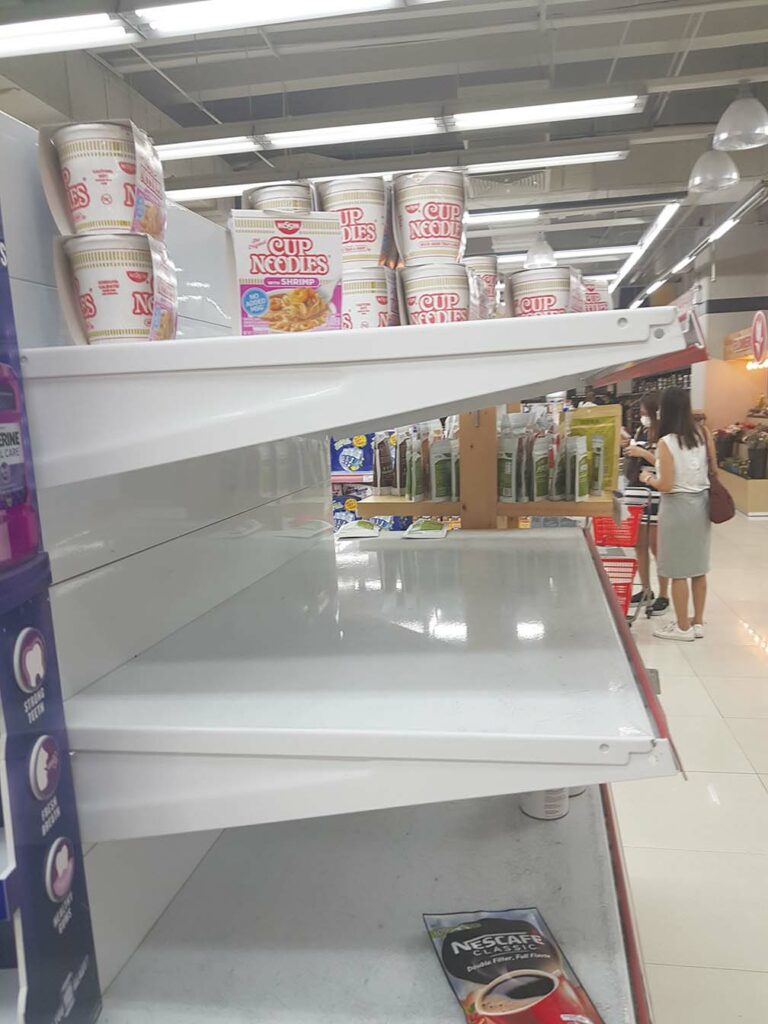
We lived with it because we had no other choice.
But the bottom line was that we could not shop. We could not go to work or open our businesses. Religious services were out of the question. Entertainment was only what we could find and do in the home. For a month or so, nothing moved. Public transportation was non-existent. You might had not driven your car more than a few kilometers in weeks. Slowly as the situation and restrictions loosened slightly, we became accustomed to buying things from prepared food to beauty items and had them delivered by motorcycle.
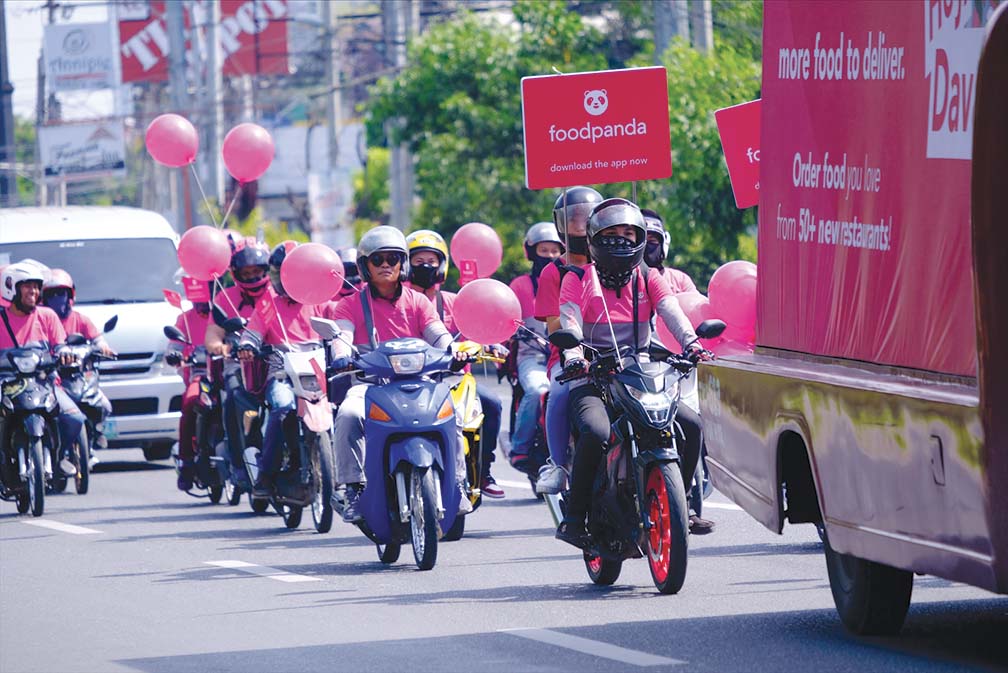
And it was like the feng shui guy said: “You will have more free time, and you will be able to rest. You will consolidate the relationship with your life partner, and you will spend more time with the kids.” Wow, did we spend more time with the kids.
Looking back, some families could not take the strain of all that ‘free time’ together. Others were brought closer by being locked up 24/7 and having no one to talk to but each other. Family celebrations like birthdays and anniversaries became genuine ‘family affairs.’ Once in a lifetime events like births, deaths, debuts, and christenings were muted and very personal, while not being able to share these with friends. Eventually we went ‘on-line.’

WE LOST A PART OF OUR CULTURE as fiestas across the nation were cancelled. We lost our All-Saints Day family pilgrimages. This will probably continue into 2021. Devotees have been told to “brace for ‘different’ 2021 Black Nazarene feast.” Some Sinulog-related activities in Cebu City for the Feast of the child Jesus in January 2021 have been cancelled. We have lost all the common and normal school activities for 2020 and probably also for at least some of 2021.
If our job or business was suitable, we learned to work from home. We learned how to do ‘Zoom’ meetings. The percentage of us doing our banking over the internet skyrocketed. We adjusted our daily routine in ways that we never could imagine months or even weeks before. While it became an internet joke, some people did learn a foreign language, how to do needlepoint, or bake a cake. And I am not being sarcastic. Our 6 and 8-year-old granddaughters were staying with us for a vacation before going back to school and got caught in the lockdown. I did teach them how to bake a chocolate cake. And brownies, banana bread, and crinkles.

During the lockdown most of us kept in contact with the outside world through social media. Here we learned what was going on at the ground level. The stories were often tragic. Four members of one family all succumbed to the disease. Another experienced the death of both the grandfather and grandmother.
Many of us did have a close friend or two who contracted the disease and had to be hospitalized. We suffered along with them and faced their trauma. The first question was “How did it happen?” In my particular case, one of my business partners told me he had been exposed to someone who eventually spent two weeks in Intensive Care. My dentist came down with COVID-19 from one of his colleagues. As in wartime and when we look back on 2020, we will all have a story to tell.
As August began, the government loosened the quarantine in the National Capital Region. Each major area was treated differently depending on the increasing or decreasing number of cases. Testing ramped up considerably. But operating on the advice of the medical community and again without warming, we moved to stricter restrictions for two weeks. Whether or not this made sense from a community health standpoint is impossible to know as you cannot prove a ‘negative.’ But the negative economic impact was great.
The pandemic created a huge army of new ‘experts’ on epidemiology, community health protocols, and of course economics. It seemed— and still seems—like every one of them knows exactly what to do to save the nation’s health and wealth. It is only that the government refuses to listen to their perfect solutions. And that was and is the case for every country around the globe that is still caught in the epidemic.
It was to be expected that every incumbent government administration would take credit for any successes and attempt to shift blame to someone or something else for any failures. However, in many countries, in most instances, it was the political opposition that has been ‘politicizing’ the pandemic and their government’s health measures response. In one sense, there is nothing wrong with that. Everyone has the right to say that “The government should have, could have, or shouldn’t have” acted in a particular way. While those kinds of remarks usually after the fact of a disaster, in this case the disaster was on-going. We might say that it was necessary like shouting at the person driving the car to ‘Stop!’ because you see a dog crossing the road.
But were the remarks only for political propaganda purposes? Could the government’s response also have been for political reasons?
THE PHILIPPINE ECONOMY TOOK A HIT TO JAW with the Taal eruption. The disruption was not as much ‘physical’ as it was psychological. It created some doubt as to whether expansion and capital expenditure plans should move forward or be put on hold.
The dilemma was resolved during January as news of the pandemic started to be more frequent and of more concern. Both consumers and businesses hate uncertainty. Both express their insecurity through their buying habits. The consumer confidence index by the end of first quarter was at the lowest level since the second quarter of 2019. Business confidence dropped by nearly 50% from the fourth quarter of 2019. Manufacturing production fell by 40% from the previous year.
At the end of the first quarter and with only two weeks of quarantine and highly restricted travel, the quarter-on-quarter from 2019 change in the country’s Gross Domestic Product was a negative 5.6%. The change year-on-year was a negative 0.70%.
At the end of second quarter in June, the collapse was complete. Economic growth was down almost 17% from the same period in 2019. Businesses and consumers were even more negative, not seeing any glimmer of hope for the future. Official unemployment was the highest in history with more than seven million people out of work.
The spread of COVID-19 created the pandemic. People were getting sick and dying all over the world. Governments shut down their countries to keep people from infecting one another. Economies came to a total standstill. Was that the right strategy? Obviously, the answer is both yes and no. Yes, the quarantine kept people from interacting with one another and no, the disease still kept spreading with more cases and more deaths.
However, there is no question that the ‘cure’ for COVID-19 found in the lockdowns did have the side-effect of broken economies. We were told that we had to make a choice between saving lives and saving the economy. We had to make an economic sacrifice. But it goes much further than that.
Individually we all had to sacrifice and these have been and continue to be big sacrifices. No matter your age, economic situation, or your geographic location you were forced by the situation and conditions to give up some of your life. And maybe some of your future.
Someone’s child—or little brother or sister—missed their first day at school. We were not able to say farewell to that special elderly aunt or grandparent who passed away during the quarantine. Plans for college are on hold.
Are you depressed enough with all the negative gloom-and-doom? Good. Now it is time to take our lives back.
I personally decided after six months of quarantine that I was through with the lockdown. My being in COVID prison was not going to save the world. Of course I followed all the lockdown protocols to protect me, others, and not wanting to be a douchebag. But the family Saturday lunch was in Antipolo with a side trip to the church.
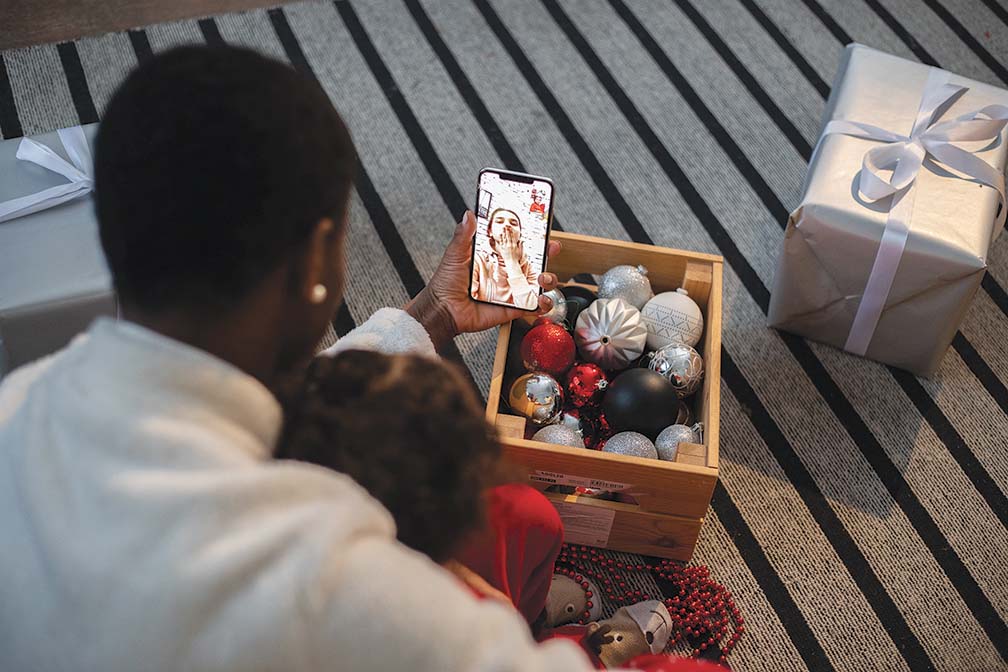
If you or your children have been studying on-line, take ownership and make it successfully happen. Whining about the inconvenience like bad internet is really not acceptable. Remember when you were whining about the rain and floods? Here we are just before Christmas and the ‘-ber’ months belong to Filipinos for our Christmas season. We did lose some of our famous Christmas season.
How the Grinch Stole Christmas! is a famous children’s story written by Dr. Seuss (Theodor Geisel) in 1957. The Grinch, a grumpy, solitary creature who attempts to put an end to Christmas by stealing Christmas items from the homes of the nearby town Whoville on Christmas Eve. He was born with a heart that is “two sizes too small.”
So maybe we won’t have all the celebrations we expect for a normal Christmas. Laugh and sing anyway, glad for what we have and not worried about what we do not have.
Take Christmas back from the heartless COVID-19 Grinch.
Did you set up a Belen for Christmas? If not, you still have time. Do not let this honored Filipino tradition get lost in the pandemic.
Probably you are not going to do much traveling during the holiday so make it a family affair. If you were late to the season with your Belen, it will still look good at least through the Feast of The Three Kings in January.
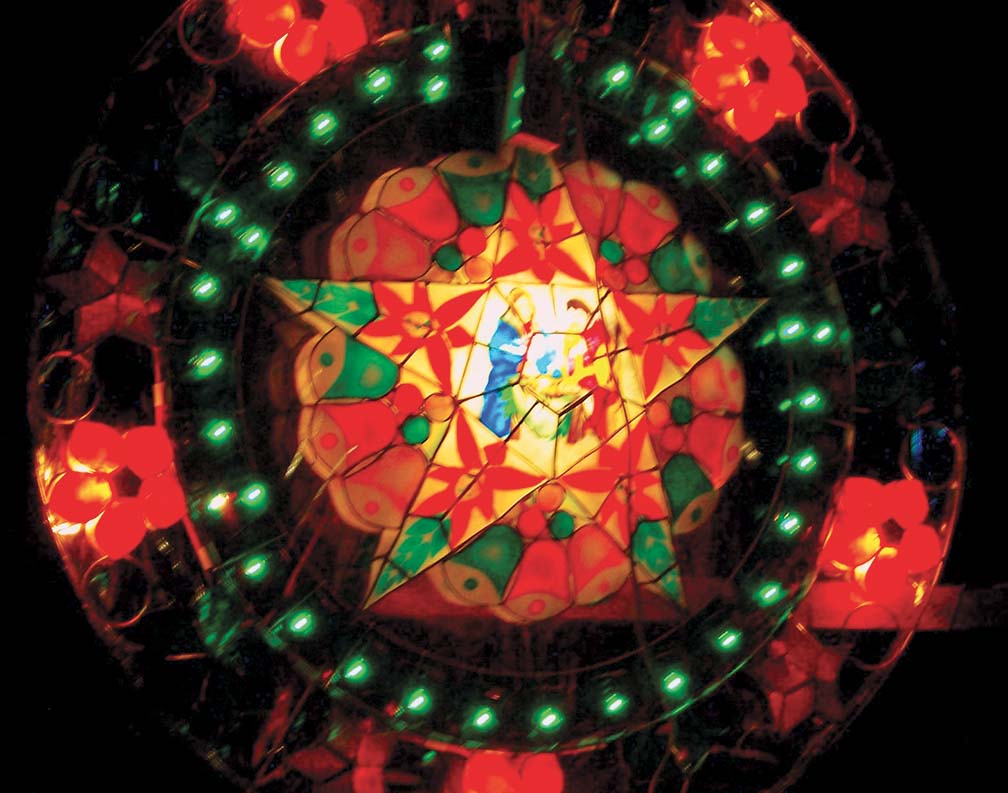
Do you have a parol, no matter how large or small, on your door?
It is a scientific fact that it will keep COVID-19 out of your house just like the Israelites kept the Angel of Death away in Egypt. Okay, maybe not.
But it will remind your neighbors and you that you are not defeated by the pandemic.
And if you did lose a family member or friend to the virus, it is a fitting tribute to their life. The little things, the symbols do count in times of adversity.

Do you normally attend (or not attend) Simbang Gabi? Do it this year on-line. There is really no excuse. Certainly it will not be the same experience as being in a church in the dark. But think about the millions that will be sitting at home just like you listening to the special Mass. I usually go to Mass once a week. It is a time of no cellphones, no internet, and a period of peace and reflection. Making the switch to viewing Mass on-line was not easy but it was necessary. Participating in the Mass was even harder but eventually it came naturally.
At least attend the Misa de Gallo with your family if possible and better on-line this year.
Caroling from house to house is not going to happen this year and we are the lesser for it. But there is not much that we can do about this. However, at least in my area, caroling is also done to raise money for the less fortunate. I guarantee you there is someone less fortunate than you are and needs your help. Your own church probably has a way to receive donations on-line and there is the Philippine Red Cross.
Interesting historical fact. Christianity exploded in the Roman Empire after the Plague of Cyprian in A.D. 250-271. One reason was that the Christians, unlike those of the ‘mainstream’ Roman religious, did not flee the city for safety from the plague and stayed to help and treat the sick.
There is no excuse for not celebrating Noche Buena. It does not matter how heavily laden the table is or is not with different and special foods. If you haven’t learned how important family is during these last many months, I feel sorry for you. Eating together is one of the most important bonding times of the human race.
And pandemic or not, we are all given only a certain number of Noche Buenas to celebrate in our lives.
If it is any comfort, the whole world is experiencing a different and unusual Christmas season. How bad is it? Check this headline from one US magazine. “21 Festive Quarantine Christmas Ideas for a Holly Jolly Holiday.” And the suggestions: ‘Have a video call with Santa Claus,’ Mix a cozy cocktail,’ ‘Put on your Christmas pajamas,’ and ‘Watch a Christmas movie.’ In other words, Zoom with a guy wearing a red costume, get drunk, and pass out on the couch watching an old movie. Surely we can do better than that.
We have almost made it through 2020 but the pandemic is not over.
The challenges of 2021 are right around the corner and we need to be mentally prepared. We need to make this Christmas the best we possibly can any way we can.
The Grinch expected sadness and crying on Christmas morning after stealing all the gifts and decorations. Instead he hears laughter and singing as the people of Whoville celebrate Christmas Day.
“The then Grinch thought of something he hadn’t before!
Maybe Christmas, ‘he thought doesn’t come from a store.
Maybe Christmas…perhaps…means a little bit more!’
Pope John XXIII wrote that “Mankind is a great, an immense family. This is proved by what we feel in our hearts at Christmas.”
Normally we might take that is as some pretty words from an old guy who is supposed to say something like that. But this year it really takes on a new meaning considering that 65 million people have been infected and some 1.5 million have died.
The words that maybe we all need right now comes from a woman named Agnes M. Pharo.
“What is Christmas? It is tenderness for the past, courage for the present, hope for the future.”


